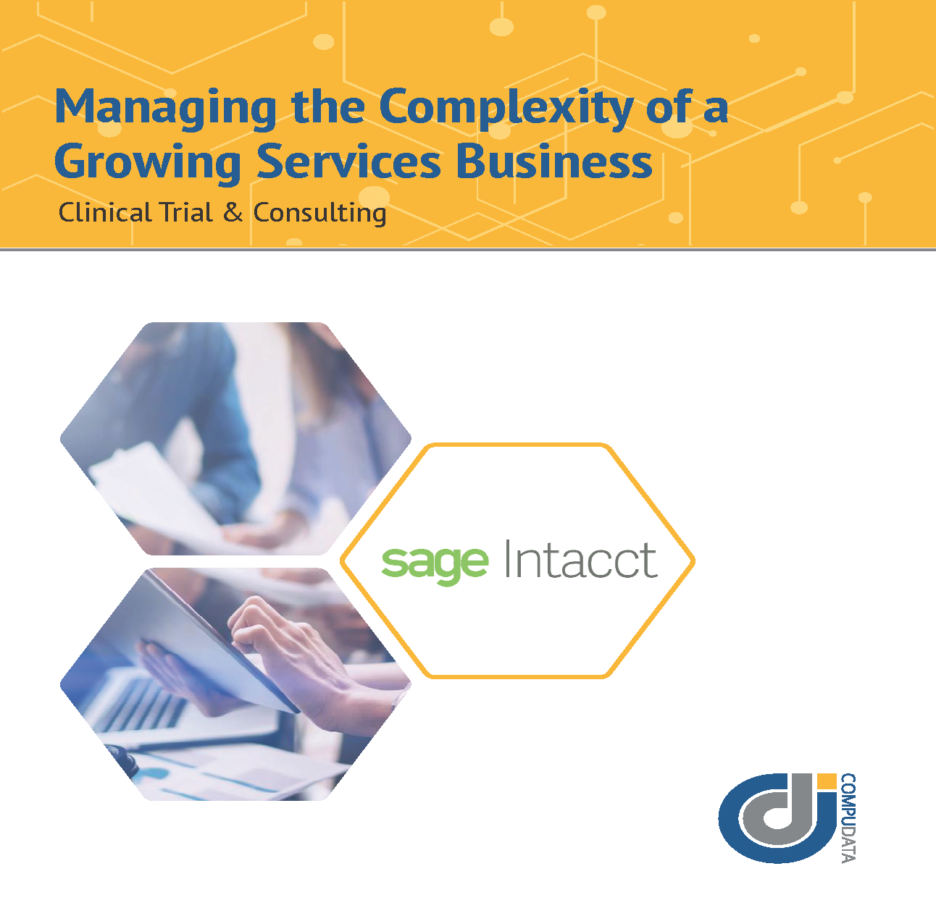What is cloud financial management – and what does it have to do with graduating from QuickBooks?
Today’s growing businesses are facing unprecedented challenges and opportunities and realizing they need to look at cloud financial management to excel in growth. They have the opportunity to capitalize on global markets and resources by virtue of today’s telecommunications networks, electronic commerce outlets and lower international trade restrictions. As a result, companies of all sizes are leveraging lower cost materials and skills abroad, and selling to new markets worldwide. On the other hand, companies must also contend with escalating competition and more complex operating requirements.
At the same time, many businesses are increasingly reliant on a dispersed workforce of remote or mobile employees. They must also communicate more effectively with an expanding network of global suppliers, channel partners and customers. In order to manage these escalating challenges and fully capitalize upon today’s expanding market opportunities, an increasing number of growing businesses are recognizing that they must adopt more sophisticated financial management systems to properly support their businesses.
Some smaller companies have used QuickBooks to track finances, but now need a more robust financial management system to handle their increasingly complicated transactions. They need to better forecast and track their revenue flows, keep a closer eye on their cost structures and adhere to tighter accounting and regulatory compliance standards. In the past, when companies graduated from QuickBooks, they would have to make significant investments in costly and complex on-premise, financial management software to meet their needs. These premise-based applications often required long deployment cycles, added hardware to support the applications, and dedicated in-house information technology staff time to keep the software up and running.
Today, there are some escalating trends paving the way to increased cloud financial management adoption.
- More and more companies of all sizes are adopting a new generation of cloud financial management, Software-as-a-Service (SaaS) solutions to satisfy business requirements. This trend began with the adoption of customer relationship management, payroll and conferencing solutions from SaaS vendors such as Salesforce.com, ADP and Webex/Cisco. The success of these SaaS deployments has led to companies adopting comparable SaaS solutions to satisfy their financial management software needs as well.
- Companies of all sizes are facing a combination of market trends which are forcing them to more effectively manage their businesses. These trends include globalization, competition, worker dispersion, and a growing acceptance of web-based, on-demand services. Globalization has created new market opportunities, but has also opened the door to new market competition. It has given companies access to new markets and cheaper offshore resources. It has lowered the barriers to entry for a growing assortment of competitors who are increasingly competing on price rather than product features.
- The growing popularity of cloud-based services—such as Amazon, iTunes, and YouTube—in the consumer market has set the standard for similar easy to use, economical, software solutions to meet various corporate requirements. As consumers become comfortable using cloud-based applications in their personal lives, they increasingly want to take advantage of comparable solutions in their professional lives and work environments. These trends are fueling the rapid growth of a new generation of web-based, SaaS solutions.
- More and more SaaS offerings have been specifically designed to scale to meet the needs of both small and large enterprises. SaaS appeals to companies that have been unable to acquire the sophisticated applications of the past, those who have grown tired of the complexities and costs of premise-based applications, and others who have outgrown the capabilities of their existing applications.
- While companies of all sizes must employ increasingly sophisticated financial management to control their corporate operations, small and mid-sized companies are particularly challenged to contend with these issues. Many of these companies are either young or too small to be able to justify the cost and complexities of traditional mid-market on-premise applications. Many have initially relied on Intuit’s QuickBooks to meet their revenue and expense tracking needs but their business requirements have evolved.
- As products and services become more complex, so do revenue management and billing requirements. Companies today also need to comply with increasingly complex revenue recognition guidelines. Most traditional mid-market accounting systems are not designed to handle this increased complexity and many organizations are forced to use manual spreadsheets to manage their revenue recognition and billing processes. By leveraging a financial management system that enables you to automate these processes, companies benefit significantly in higher finance productivity, faster close processes, and simplified compliance.
- As companies grow, they often need to track revenues, expenses and profitability across multiple business units. Rather than create multiple instances of financial information for each entity which must be consolidated manually into a Microsoft Excel spreadsheet, many companies seek an integrated, financial view of a company’s end-to-end operations.
- Many companies are looking to gain better real-time visibility into their business and more effectively distribute a consistent set of information to all stakeholders. Often, Excel or a costly 3rd party reporting solution seem to be the only options. By leveraging a financial system that incorporates both a multi-dimensional General Ledger and an embedded reporting and analytics engine, companies can more easily analyze real-time consolidated and local financial and operating metrics across their business with the ability to drill down in real time to supporting details.
Today, companies who are graduating from QuickBooks have many options, but they primarily fall into two categories— selecting another on-premise software package or shifting to a SaaS alternative. On-premise solutions from vendors like Microsoft, Oracle and Sage require that customers purchase a perpetual license, as well as the hardware to support the software upfront. In addition to these significant capital investments, on-premise applications also place the burden of deploying and managing the software on the user, potentially increasing IT resource needs.
The new breed of SaaS offerings from companies like Sage Intacct, permit users to pay on a subscription basis and relieves them of the added hardware costs, as well as the deployment and management hassles. This allows users to focus on leveraging the software functionality rather than worrying about the application availability. The SaaS model also makes it easier for growing companies to add more user licenses as they need them rather than having to purchase them upfront regardless of need. Unlike on-premise applications which might be hosted by a software vendor, today’s SaaS solutions have been built to fully leverage the web and permit end-users to utilize the online applications anytime from anywhere.
Interested in learning more about how you can graduate from QuickBooks to Sage Intacct? Contact CompuData!

